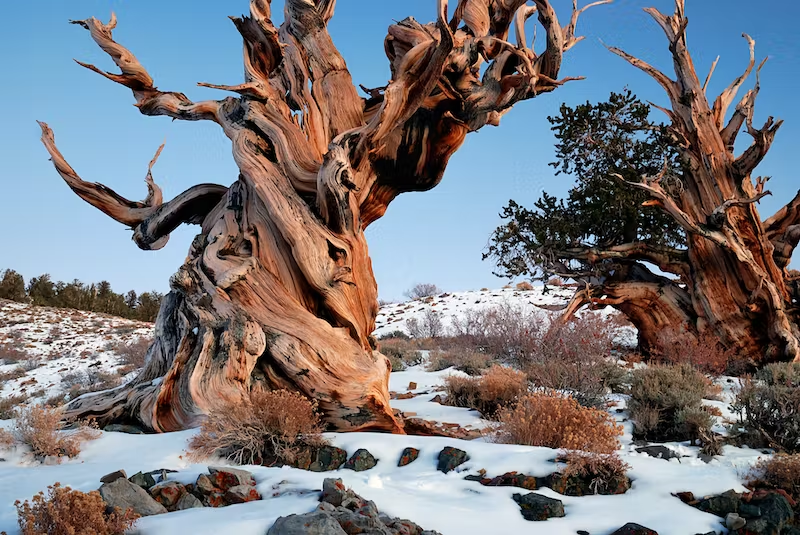The title of the oldest tree in the world is generally given to a Great Basin bristlecone pine (Pinus longaeva) known as Methuselah. After extensive research and dendrochronological testing (the scientific method of dating tree rings), Methuselah is estimated to be over 4,800 years old. This article will explore the details surrounding this ancient tree and what makes it so unique.

The Methuselah Tree: A Testament to Longevity
Deep within the White Mountains of California, in the Inyo National Forest, stands an unassuming tree that has outlived empires, witnessed the rise and fall of civilizations, and remained steadfast through millennia. This is the Methuselah tree, a Great Basin bristlecone pine that is considered the oldest non-clonal tree in the world.
Named after the biblical figure who lived to the age of 969, Methuselah’s exact location is kept a closely guarded secret to protect it from vandalism. This ancient bristlecone pine thrives in an arid region at an altitude of over 9,800 feet (3,000 meters), where the thin air and harsh conditions would seem inhospitable to life. Yet, it is these very conditions that contribute to the tree’s longevity.
Bristlecone Pines: The Science of Survival
The Great Basin bristlecone pines are renowned for their ability to survive in such unforgiving environments. They can withstand cold temperatures, nutrient-poor soils, and arid climates. Their wood is dense and resinous, making it resistant to insects, fungi, and rot. The harsh conditions actually serve to slow the tree’s growth, which in turn makes their wood even tougher and more resistant to the elements.
Bristlecone pines have a unique adaptation that allows them to remain standing long after they die. The trees can endure in a “strip-bark” form, where only a small strip of living tissue connects the roots to a few living branches. This adaptation means that even when most of a bristlecone pine’s bark is dead, it can still sustain life in a limited capacity, thus prolonging its overall lifespan.
Dendrochronology: Unlocking the Secrets of the Past
Dendrochronologists, scientists who study tree rings, have carefully examined bristlecone pines to understand their age and the climate conditions they’ve endured. By counting and analyzing the growth rings of these trees, researchers can not only gauge their age but also infer historical climate data. This has made trees like Methuselah invaluable to our understanding of Earth’s environmental history.
Methuselah’s Legacy
The Methuselah tree’s impressive age makes it a symbol of endurance and persistence. It has become a subject of fascination not only for dendrochronologists but also for the public. The tree’s legacy extends beyond its age; it represents a living connection to the distant past. It has been alive for nearly five millennia, during which time the world has seen the rise and fall of countless civilizations, the development of human societies, and the dramatic changes of the Earth’s climate.
Conservation Efforts
The U.S. Forest Service recognizes the importance of the Methuselah tree and its relatives in the ancient bristlecone pine forest. Conservation efforts are focused on protecting these trees and their ecosystems. By studying Methuselah and other ancient trees, scientists hope to learn more about climate change and how to better preserve our natural world.
The Methuselah tree is more than just the oldest tree in the world; it is a living monument to the Earth’s history. It stands as a witness to time, offering insights into the past and hopes for the future. As we continue to explore the mysteries of longevity and survival, Methuselah serves as an emblem of the enduring strength of nature against the odds.

